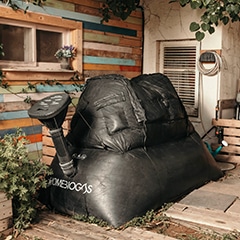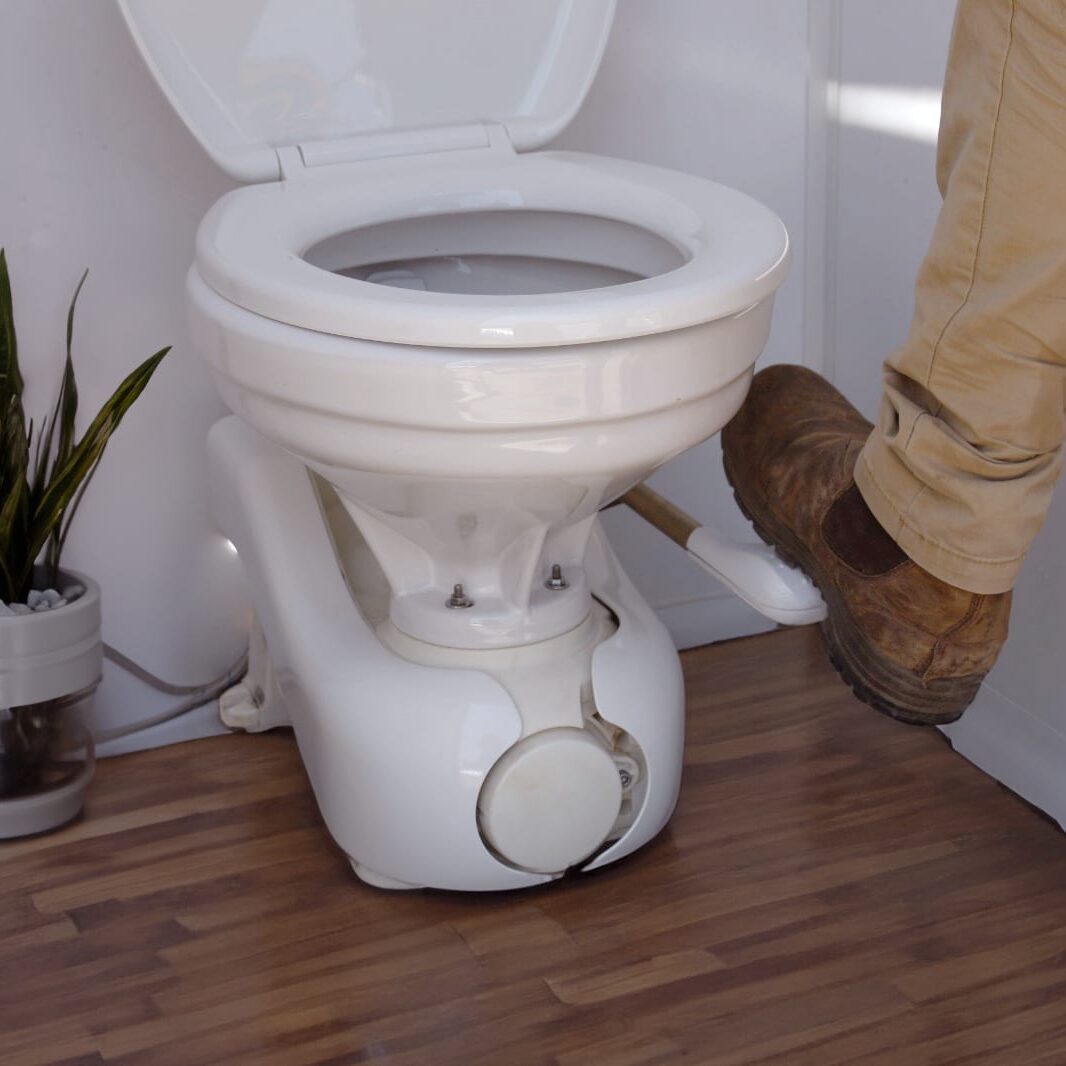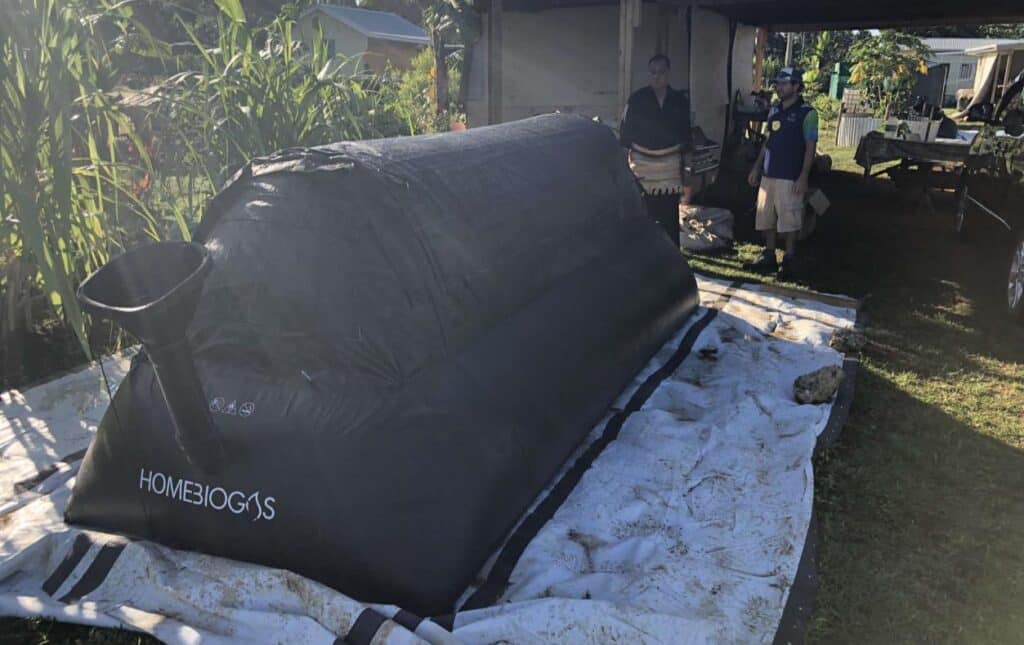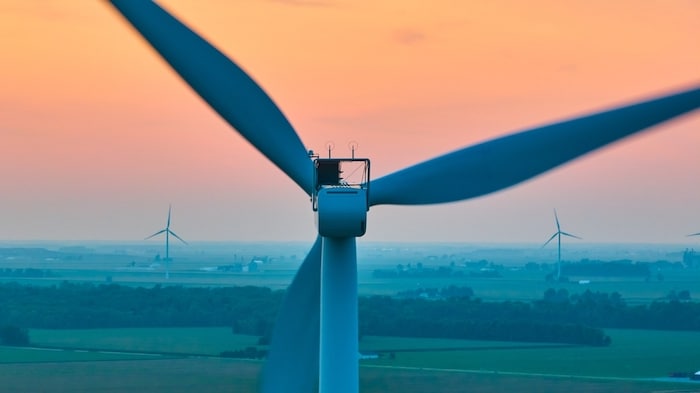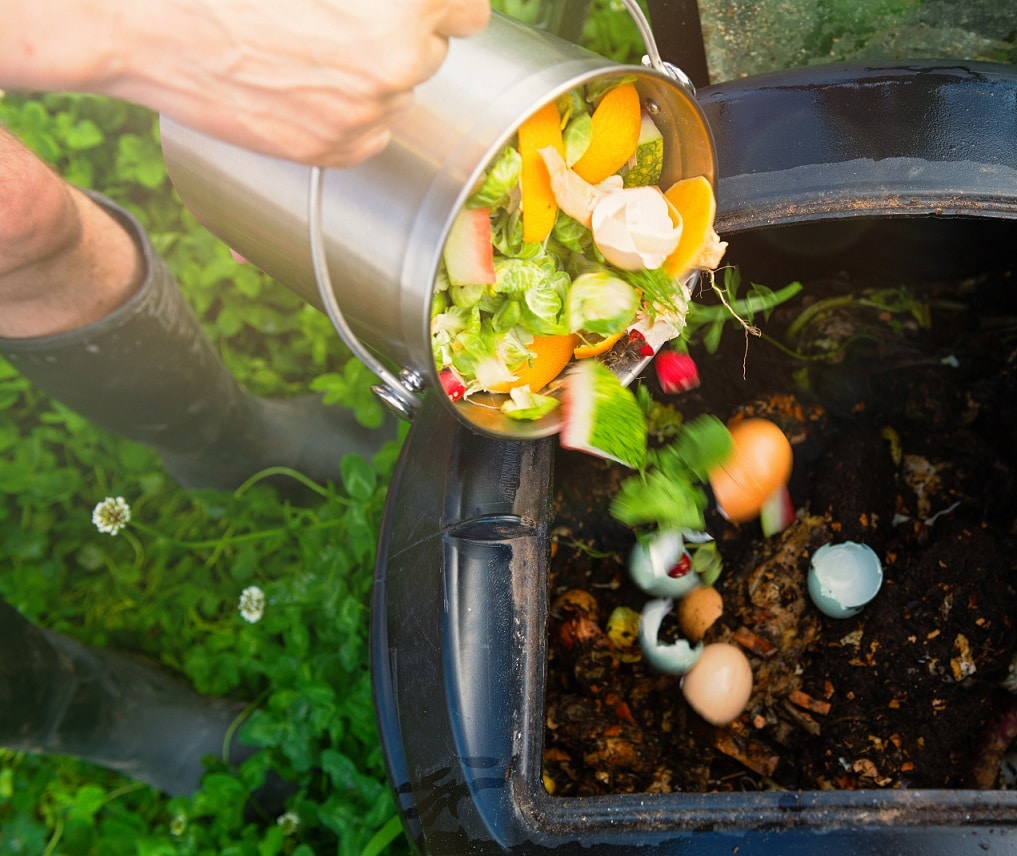
Why is food waste recycling important?
Food waste recycling could help us reduce over 170 million metric tons of carbon dioxide equivalent. That’s close to the CO2 emissions generated by 42 coal-fired power plants. Let’s break down the numbers.
We throw away 900 million tonnes of food annually. Beyond this practice’s social and economic implications, the staggering amount of food waste has severe environmental consequences. Once it ends up in landfills, the waste pollutes groundwater and air as the decomposition process generates large amounts of methane — 25 times more potent than carbon dioxide at trapping heat in the atmosphere.
Food waste recycling can help mitigate the problem with multiple social, economic, and environmental benefits:
- It raises awareness around food waste, so people are more likely to engage in activities to reduce it, like donating surplus food to food banks and charities.
- Recycling food waste can lead to educational programs to teach people about sustainable food practices, waste reduction, and the importance of consuming responsibly.
- It helps us recover valuable nutrients and organic matter that can be returned to the soil, improving soil fertility and reducing the need for synthetic fertilizers.
- We can reduce methane emissions by recycling food waste through composting or anaerobic digestion.
- It leads to cleaner and healthier communities, reducing the potential for pests, odors, and negative sanitary consequences from improperly discarded waste.
- Food recycling initiatives support a circular economy that promotes waste reduction, resource efficiency, and sustainable consumption patterns for a more sustainable future.
- Recycling food waste helps save landfill space for preserving land resources and reducing negative impacts on ecosystems.
Ideally, prevention is the best way to handle food waste. Recycling with intention is the second best option, as we get to turn trash into something useful. Food waste recycling keeps landfills clean, directly impacting water and air quality, and enables us to repurpose resources that otherwise would be lost. When all food gets reused, everybody wins.
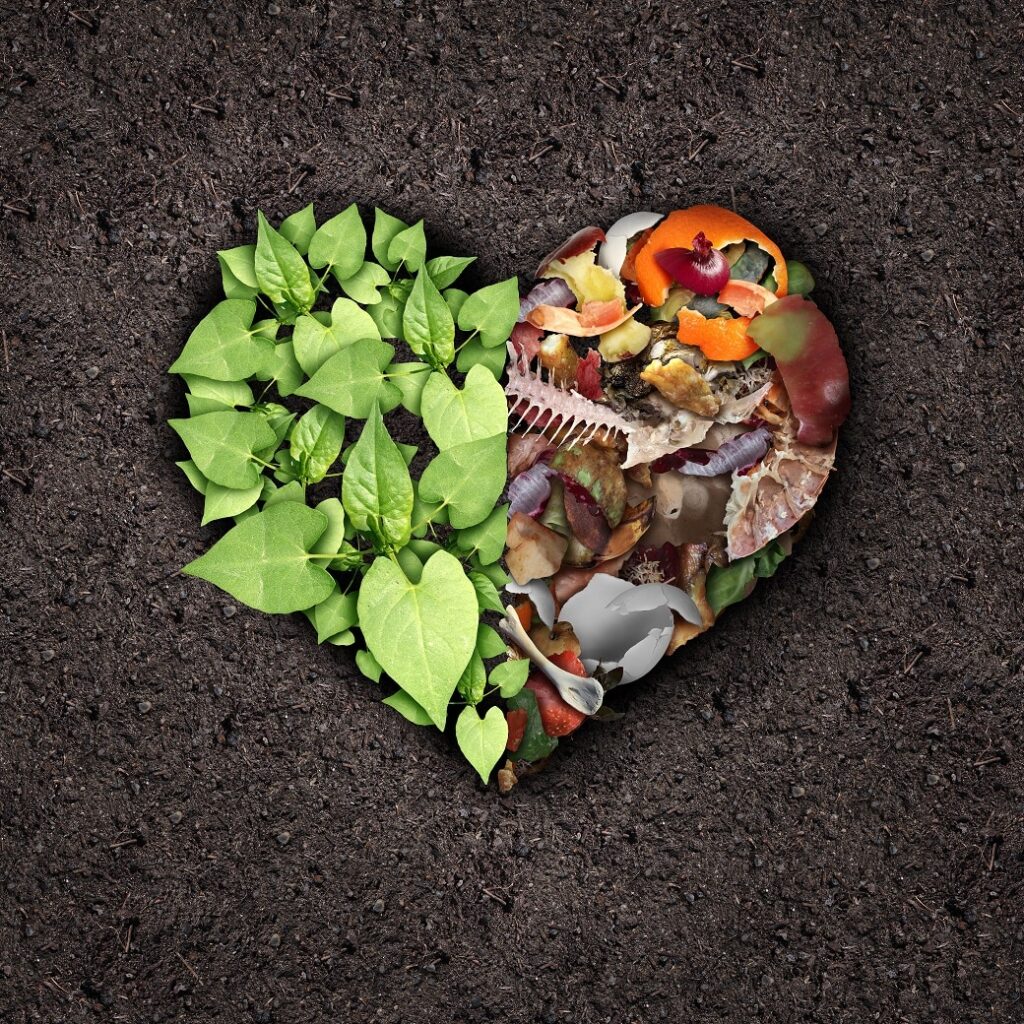
Methods of food waste recycling
- Prevention remains one of the most effective tools in food waste management. Proactively minimizing the total amount of food produced at the earliest stage reduces the need for food waste recycling, directly impacting the environment.
- Food donations through community centers and local organizations are a valuable resource for those who cannot afford food. It makes it possible for everyone in a community to have access to healthy, nutritious meals. It’s a win-win situation for both the environment and those in need.
- Animal feeding is another effective way to recycle food waste, as it prevents it from ending in landfills and reduces animal feed costs. This method is helpful for animals in captivity, pet food companies, or even farms.
- Industrial facilities can produce biodiesel from waste fats, oils, and greases to prevent them from ending in landfills. The fuel is often used to power green public transportation.
- Composting is one of the most common forms of food waste recycling. Through this process, bacteria break down the organic materials in your food waste to produce a nutrient-rich compound you can then use to enrich the soil and fertilize your garden and lawn. The process can occur in a compost bin or pile and requires little assistance.
- Produce biogas through anaerobic digestion. This process turns your food waste into energy in a sealed environment with specific temperature and humidity levels.
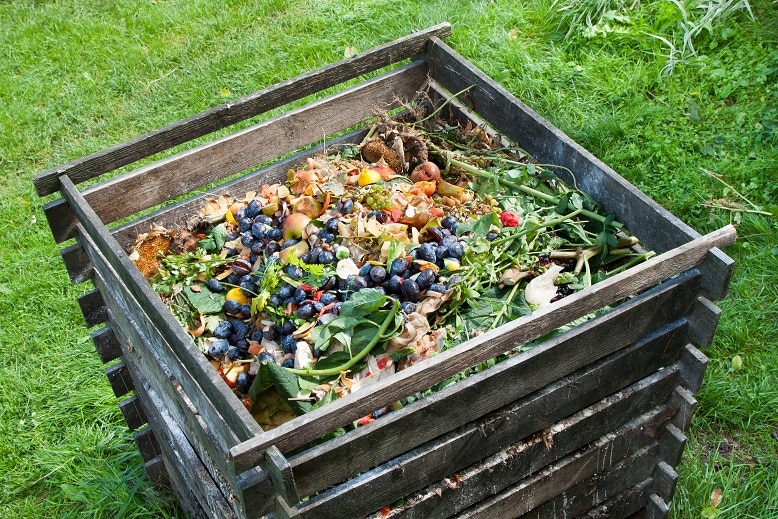
3 Eco-friendly ideas for food waste recycling
Compost kitchen and garden waste
You can set up a compost pile or bin depending on how much waste you need to compost. It can be as simple as a designated backyard area or a small indoor container. You can buy your compost bin online or from a local store. Alternatively, you can make your own out of a large plastic container with holes drilled in it.
What you can compost:
- Vegetable peelings and fruit trash
- Dried herbs and spices that no longer have a string flavor
- Tea bags and coffee grounds
- Plant prunings and grass cuttings
- Crushed eggshells
- Bedding from chickens
Most of your kitchen and garden waste is nitrogen-rich, so you must add carbon-rich materials (brown ingredients) to balance the compost and accelerate decomposition. The purpose is to get close to a 30:1 carbon: nitrogen ratio — which you can achieve by adding four parts of carbon-rich elements for every part of green ingredients.
Items like cardboard egg boxes, wood chips, crumpled newspapers, paper shopping bags, straws, and dead leaves are excellent sources of carbon and fiber. You can also add some soil or compost starter to introduce beneficial microorganisms to your compost.
Mix the ingredients regularly and keep the compound moist, not soggy. Once your compost has finished decomposing, you can use it in your garden or lawn.
Offer your food waste to a nearby farmer
Upcycling your food waste as animal feed is a smart way to support your local community while reducing your carbon footprint. The tricks here are to follow simple health and safety best practices when handling food waste and remember that not all food scraps are appropriate for animal consumption.
How to get started:
- Contact a farmer and learn about the food waste the farm accepts.
- Get familiar with the rules on using food scraps as animal feed. The farm might also have specific requirements for preparing the food waste before delivering it.
- Equip your kitchen with the right tools to make it easy to follow the suggested safety protocols for handling food waste.
Collaborating with a local farm to manage food waste can be a daunting process at first. Still, collecting, transporting, and disposing of food waste will become much easier with patience and determination. Moreover, once you understand the farm’s needs, you can work together to create a mutually beneficial relationship that will positively impact the environment and local economy.
Turn food waste into biogas
Making biogas from food waste in your backyard is relatively easy. All you need is a biogas digester and a fuel collection system.
The digester is a sealed container where anaerobic microorganisms break down organic matter and produce biogas. You can use organic waste like vegetable scraps, fruit peels, or even leftover food to create biogas for cooking, heating, or generating electricity.
How to get started:
- Get a biogas system and install the biodigester on a flat surface. You want to pick a location with enough sunlight to maintain a constant temperature inside the biodigester.
- Ensure the bacteria inside the digester gets enough organic matter to thrive — you’ll have to add new food waste in the biodigester regularly.
- Add water according to the manufacturer’s instructions.
The fuel generated by the microorganisms is usually stored in a separate tank or bag. The remaining digested material (digestate) is a nutrient-rich liquid fertilizer, perfect for your garden or lawn.
How to implement food waste recycling at home?
All food waste recycling methods follow the same principles and best practices.
- Recycling is a great way to minimize your environmental impact, but preventative steps are essential when it comes to food waste. Meal planning and only buying what you eat are the most effective ways to reduce food waste in the first place. Proper storage of leftovers is also important. Make sure to label and date leftovers to know when they are no longer safe.
- When you first look into how to recycle food at home, check local rules and regulations. Once you know what’s allowed in your area, you can compost food scraps and other organic materials.
- Learn to separate organic and non-organic materials and dispose of trash appropriately. Depending on how you plan to reuse food waste, you might have to sort organic matter further and set aside food that can be composted or sent to a farm to become animal feed. For example, meat, oils, and dairy products can’t be in your compost pile, so you must give them a different destination.
- Opt for a recycling method that works for you so that it becomes a habit rather than a chore. If you love gardening, composting can be a great way to create nutrient-rich soil for your plants. However, a Bokashi bin or worm farm is a wiser choice if you’re short on space, as they require less space and maintenance. Whatever method you choose, remember to stay motivated and make it a part of your daily routine.
- Be consistent with your efforts and enjoy the benefits of reducing your carbon footprint while creating nutrient-rich soil for your garden.
HomeBiogas solutions for implementing food waste recycling
A HomeBiogas system enables homeowners to produce biogas from kitchen scraps in their backyards. It’s an effective tool for turning waste into energy with minimum effort!
The HomeBiogas digesters are compact and straightforward to install and use, making it a hassle-free process for homeowners. You won’t have to worry about complicated instructions or any technical know-how. Households, schools, businesses, and nonprofit organizations worldwide use this technology successfully to upcycle organic waste and generate biogas.
The system includes all the equipment you need to get started: a biodigester, an inlet sink with a plunger, a gas pipe, a combined fertilizer and gas outlet, a counter-top biogas stove, and complete instructions to help you install your biogas station in your backyard.
When using a HomeBiogas system to turn food waste into cooking gas and fertilizer, you produce up to 6 hours of clean energy daily. Not only will you be reducing the amount of food waste in landfills, but you’ll also be lowering your greenhouse gas emissions by up to six tons of CO2 per year. And the fertilizer can go back to feed the soil and help you keep your garden and lawn in perfect shape.
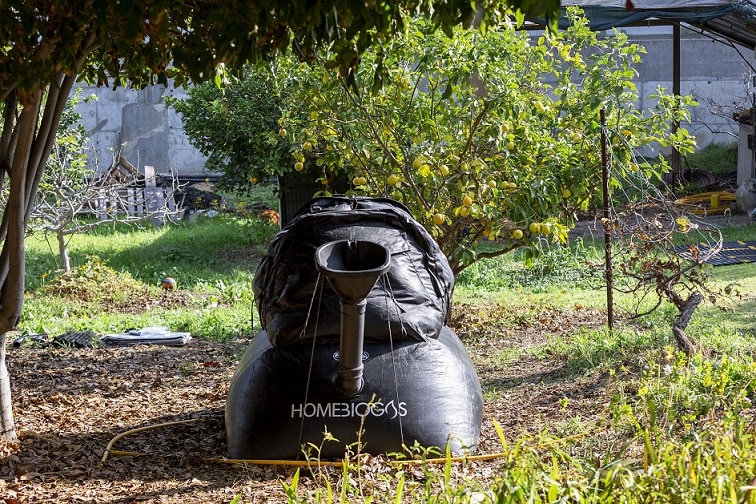
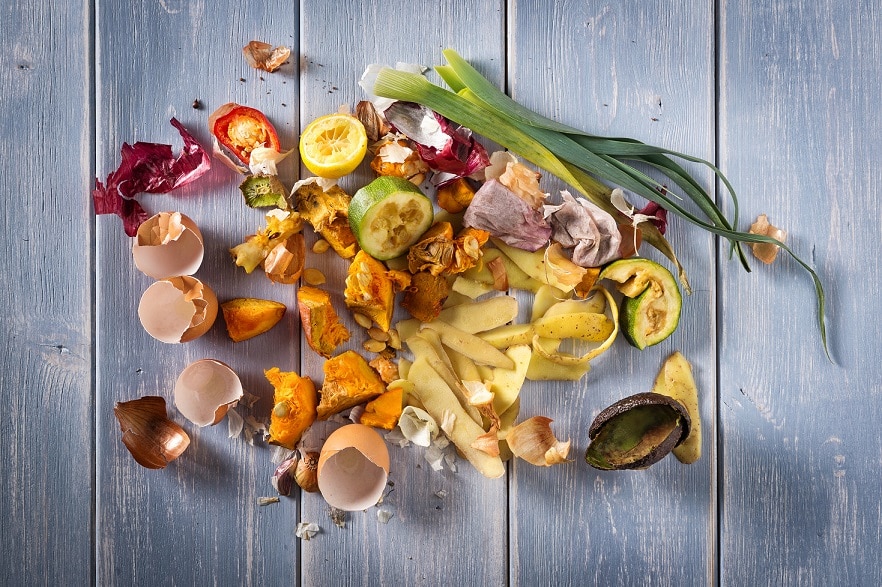
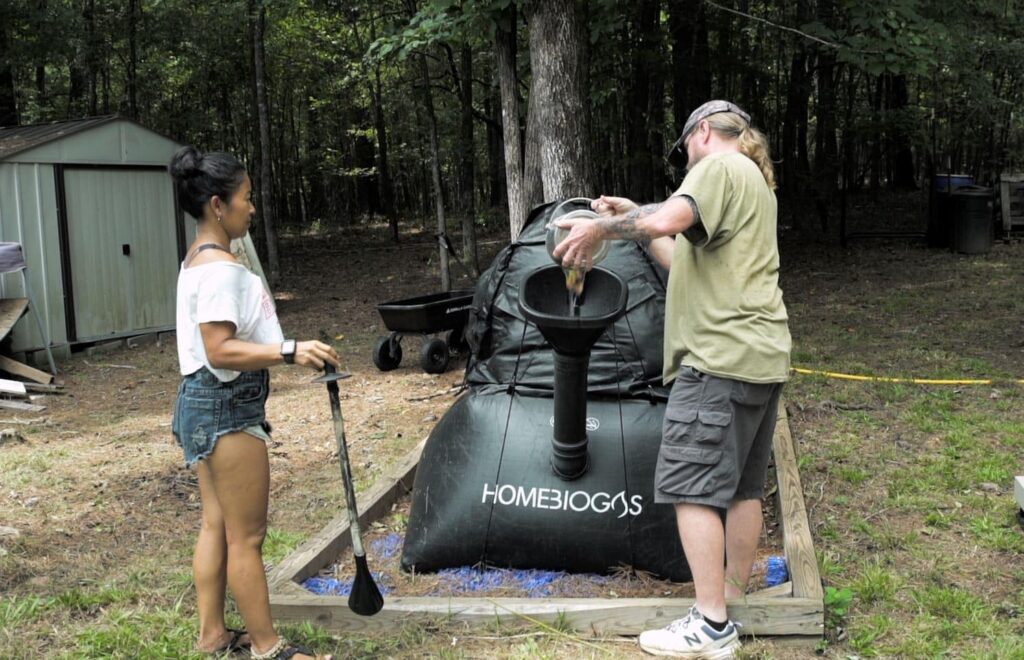

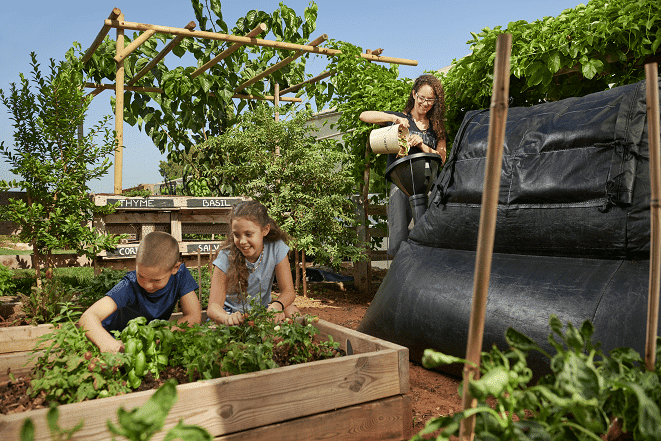
Final thoughts
Food waste recycling at home is one of those small changes that can significantly impact the environment. The more people understand the importance of being intentional with how much food they buy and what they do with the leftovers, the easier it becomes to control the level of greenhouse gas emissions a household is responsible for.
Food waste recycling can take many forms, from composting to biogas production. Composting improves soil quality and fertility, while anaerobic digestion processes produce renewable energy. So, it becomes a way to save resources, give back to the environment, and be more self-sustainable. And the good news is that most methods for recycling and upcycling food are easy to use and affordable for homeowners worldwide.
